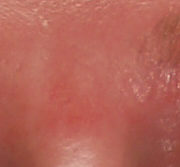Free Article on Topical Steroid addiction – withdrawal
Free article on topical steroid addiction – “Cortisol production by keratinocytes [skin cells] might work to regulate or moderate the friction between the outer environment and inner immune system by suppressing excessive inflammation or immune reaction. However, prolonged or excessive use of TCS induces skin atrophy which can make barrier function weak. Moreover, the decreased self-production of cortisol by the keratinocytes can cause hypersensitivity. The author considers it is one of the mechanisms of TSA or rebound phenomenon after TSW.”
“Abstract
INTRODUCTION:
Though topical steroid addiction (TSA) in patients with atopic dermatitis (AD) has been recently discussed as a clinical problem, there are very few studies about its mechanism. The purpose of this study was to elucidate histological and immunohistological characteristics of TSA using anti-cortisol antibody.
METHODS:
Skin biopsy specimen from eight patients with AD was stained by anti-cortisol antibody (Biorbyt, orb79379). Subjects consisted of a child patient with a short history of topical corticosteroids (TCS) application, an adult patient with a long history of TCS application, and six adult patients who have experienced topical steroid withdrawal (TSW) and the rebound phenomenon.
RESULTS:
The staining in the epidermis by anti-cortisol antibody presented patchy defects in the child patient, the patient with a long history of TCS application, and two patients at the rebound period. Parakeratosis with poor formation of corneal layer was obvious in the child patient, the patient with a long history of TCS application, two patients recovered from TSA, and two patients at the rebound period.
CONCLUSION:
Prolonged application of TCS might suppress the cortisol production of keratinocytes which is poorly developed at the early ages before childhood and completed naturally as to growth. Rebound phenomenon after TSW can occur due to the relative insufficiency of cortisol in the epidermis and the immature corneal layer formation.”

